Posts for: Howard5252
Apr 14, 2024 12:56:56 #
cahale wrote:
Whether post processing will improve them. (I'm) sorry I left my statement as a read-between-the-lines.
I'm satisfied with the SOOC version. If I make a poster, then I will post process.
Apr 13, 2024 16:37:31 #
cahale wrote:
Then do so and repost. You/we won't know until you do.
What won't you know?
Apr 13, 2024 14:48:15 #
There were intermittant clouds where I was located but in all truthfullness I did not practice finding the sun enough. I
have a few more that look similar to the first shot and so does everybody else. The second shot was last of the day. If I had been able to locate the sun more quickly, I might have been able to get a complete sequence of shots ... my bad, sorry.
PS
There has been no postprocessing on either shot.
H
have a few more that look similar to the first shot and so does everybody else. The second shot was last of the day. If I had been able to locate the sun more quickly, I might have been able to get a complete sequence of shots ... my bad, sorry.
PS
There has been no postprocessing on either shot.
H
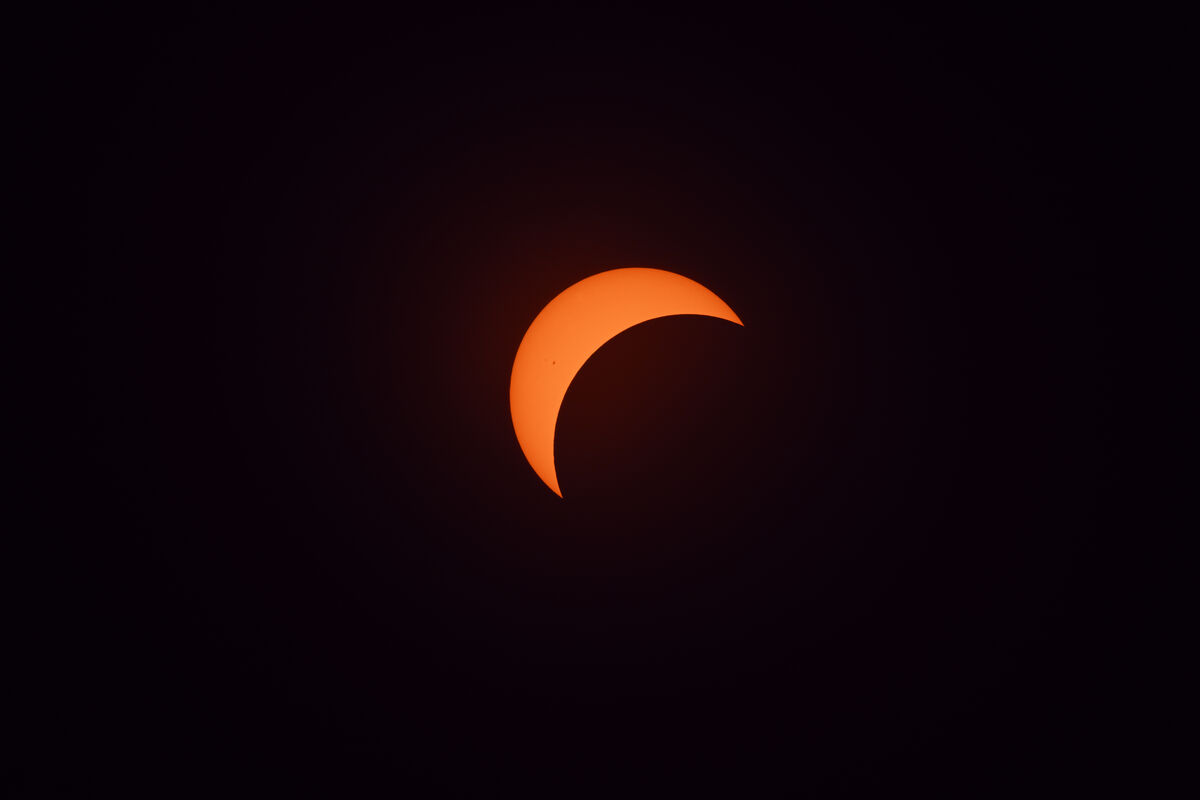
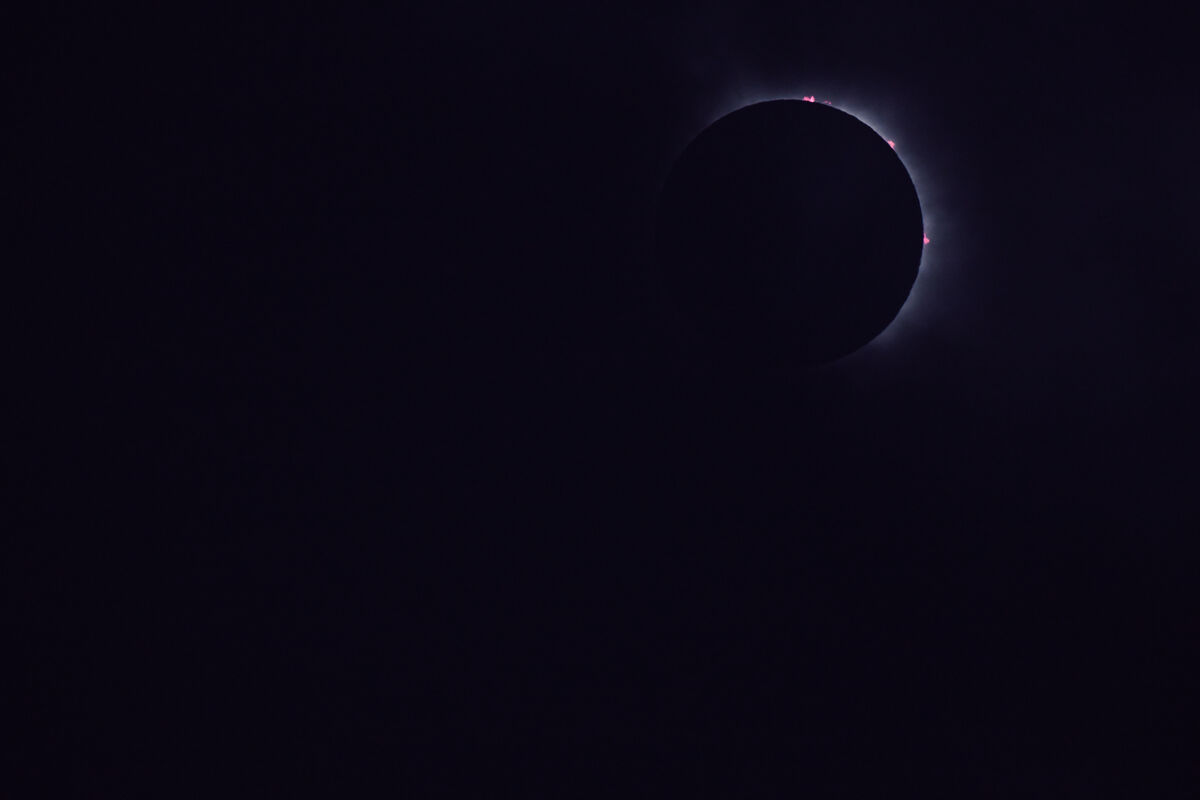
Feb 15, 2024 22:16:34 #
Ballard wrote:
It’s almost looks like an internal reflection. Make sure the lens and filter are clean as any smudges can cause some scattered light. I would test just the lens without the filter on the full moon to see if the halo occurs to see if it was just the filter or perhaps the combination on lens and 1.4 teleconverter and try the different combinations
Thank you; per Occam's razor, I'll go with the simpler answer ... the difference is in the filters. I will be using the Seymour Solar filter. However, I will be taking photos of the moon to practice my focus. If there is an equipment problem, I'll notice it.
Feb 14, 2024 23:15:30 #
I have been posting in the Gallery and just noticed this section:
Just an FYI: I am not a novice photographer, I am a novice at photographing anything astronomical. I have been reading online articles about photographing eclipses and have gotten some advice from the folks in the Photo Gallery section. Any tips on how to get the best shot I can will be gratefully accepted.
I will be using a Nikon Z9 mounted on a secure tripod with a 600mm PF lens + a 1.4TC. I will have a Sun Finder mounted on the camera and I will be using a remote shutter release.
I had been using 1000 OAKS Solar filter and could not get rid of the "Halo" Photo 1 (3366) / ISO 400 f9 1/80th. In photo 2 (3370) the halo is finally gone/ ISO 400 f9 1/200th. The 3 photos in between the first and second also had the halo, but it was dimmer and you might not have understood what I was trying to show.
The third photo (3483) is through a Seymour Solar filter. The settings were ISO 800 f11 1/250th
When the math is done to compare the exposures, they are ROUGHLY the same amount of light to the sensor.
The 4th photo is a screenshot showing the histogram of #3483; there is nothing to the right of what you see. Based on that, I think those would be the settings to use ..... ISO 800 f11 1/250th
I will do more photographing of the sun over the next few weeks, any suggestions as to settings, technique, whatever, will be appreciated. I am already getting nervous.
Just an FYI: I am not a novice photographer, I am a novice at photographing anything astronomical. I have been reading online articles about photographing eclipses and have gotten some advice from the folks in the Photo Gallery section. Any tips on how to get the best shot I can will be gratefully accepted.
I will be using a Nikon Z9 mounted on a secure tripod with a 600mm PF lens + a 1.4TC. I will have a Sun Finder mounted on the camera and I will be using a remote shutter release.
I had been using 1000 OAKS Solar filter and could not get rid of the "Halo" Photo 1 (3366) / ISO 400 f9 1/80th. In photo 2 (3370) the halo is finally gone/ ISO 400 f9 1/200th. The 3 photos in between the first and second also had the halo, but it was dimmer and you might not have understood what I was trying to show.
The third photo (3483) is through a Seymour Solar filter. The settings were ISO 800 f11 1/250th
When the math is done to compare the exposures, they are ROUGHLY the same amount of light to the sensor.
The 4th photo is a screenshot showing the histogram of #3483; there is nothing to the right of what you see. Based on that, I think those would be the settings to use ..... ISO 800 f11 1/250th
I will do more photographing of the sun over the next few weeks, any suggestions as to settings, technique, whatever, will be appreciated. I am already getting nervous.
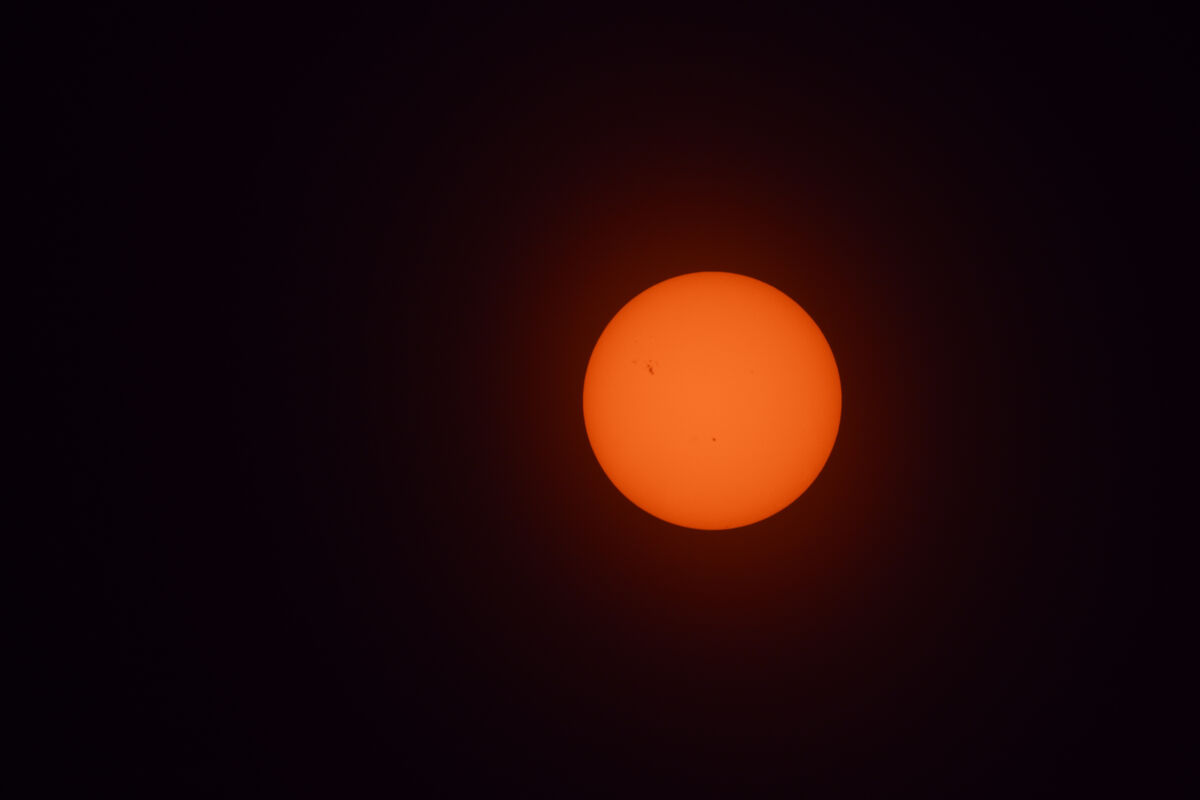
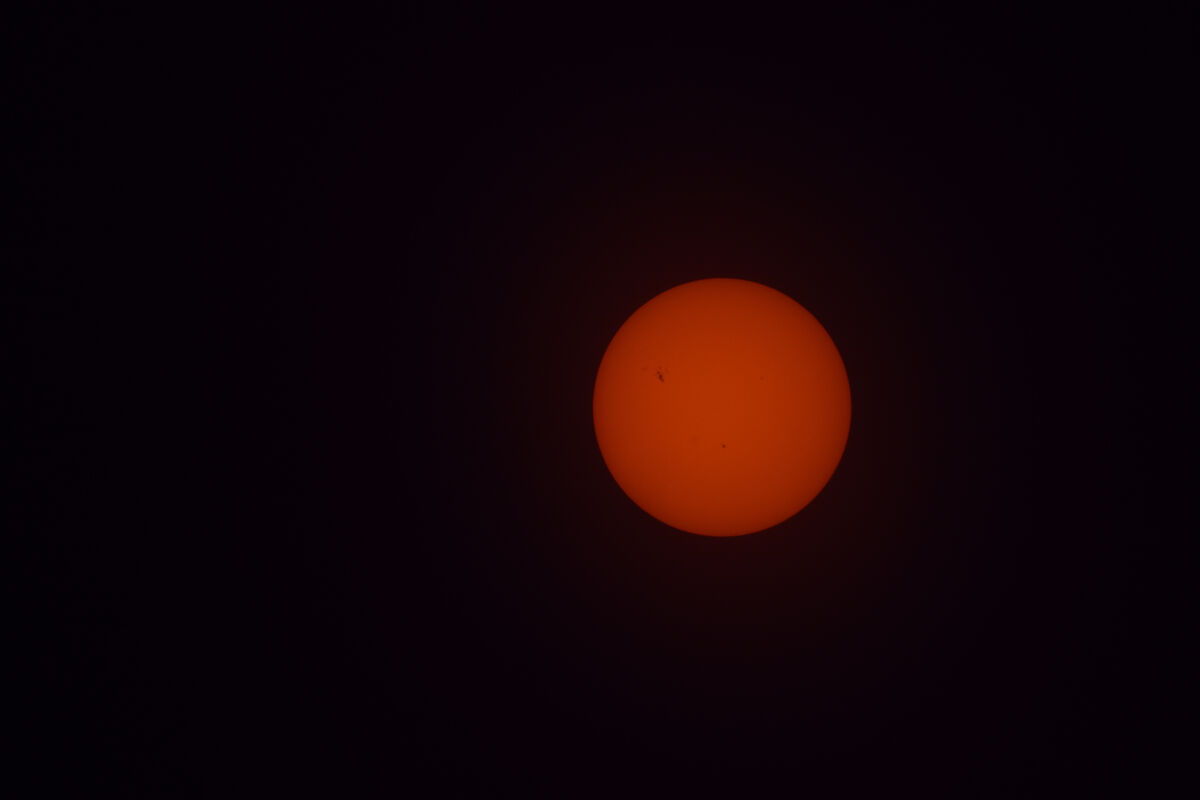
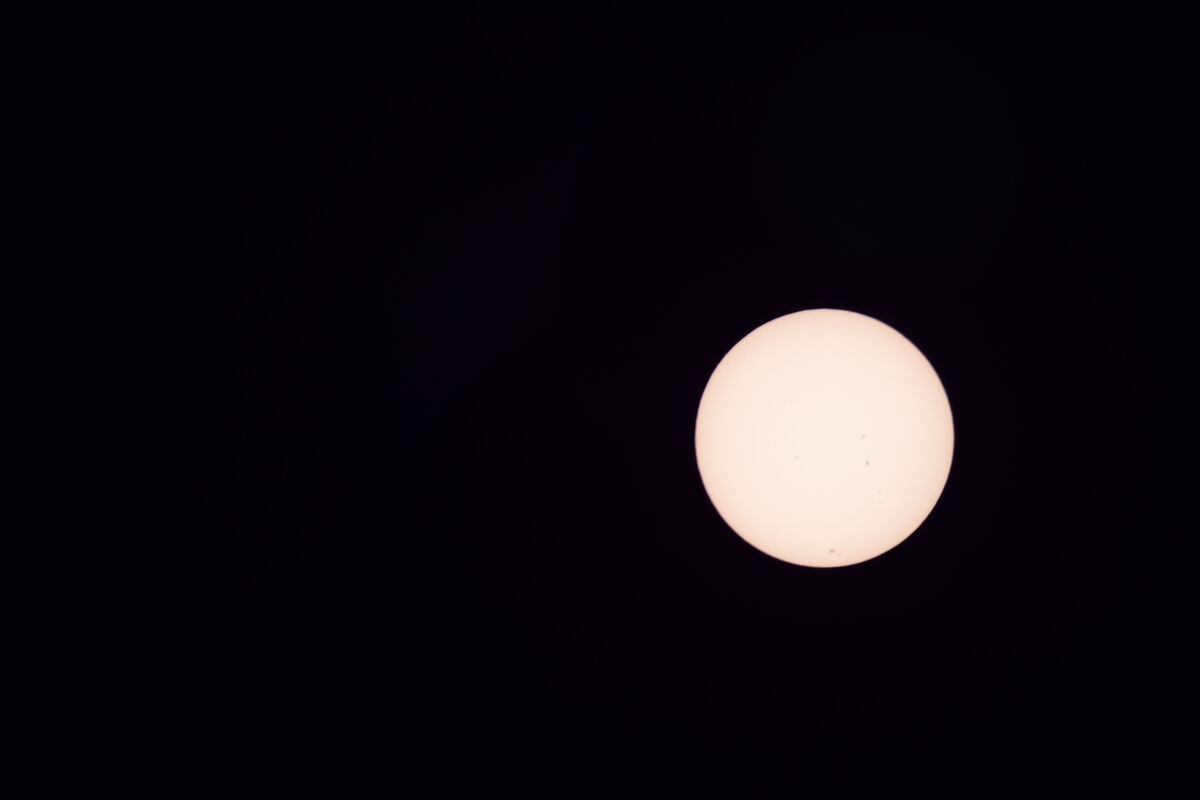

Feb 13, 2024 10:42:23 #
alberio wrote:
It's my understanding the Thousand Oaks filter is a solar filter. I've viewed the sun many times through the viewfinder or just holding the filter up to my eyes without a camera or lens.
Perhaps I was not clear; I am asking for suggestions for a solar filter to place onto the lens of my camera.
Feb 13, 2024 10:39:32 #
Basil wrote:
Does your camera have an EVF or rear LCD screen?
It makes no difference, it would not be a good idea to point a lens at the sun without a solar filter on it. I am looking for suggestions for a filter for the front of my lens.
Feb 12, 2024 19:38:50 #
I'll be travelling to Plano Tx to stay at a friends house. I am very new to photographing an eclipse. I currently am using a solar filter made by 1000 Oaks. Based upon my test shots (posted in the photo gallery) I don't think the filter is dark enough. I'm still looking for a solar filter.
BTW I looked at the filter you mentioned and came across this.
"This filter is designed specifically for photography applications. This filter is not suitable for direct solar viewing with the naked eye, including with optical viewfinders." I need something I can look at the sun thru the camera viewfinder with. Any suggestions would be appreciated.
BTW I looked at the filter you mentioned and came across this.
"This filter is designed specifically for photography applications. This filter is not suitable for direct solar viewing with the naked eye, including with optical viewfinders." I need something I can look at the sun thru the camera viewfinder with. Any suggestions would be appreciated.
Feb 12, 2024 19:26:10 #
Howard5252 wrote:
Wonderful photographs; enjoyed looking at them. As for the cropping ... who cares? the object is to get as good a photograph as possible. If you get it but the bird is too small, then it's a credit to your skill that you took a photo that can stand up to extreme cropping.
Feb 12, 2024 19:23:10 #
Feb 12, 2024 19:12:28 #
The answer is that it's more a question of manners than law. Every photo you take is copyrighted, it's yours, that is uinderstood. Defending the copyright is another matter entirely ..... it can become EXTREMELY expensive. You are responsible for your actions; so it's really up to you as to how you treat someone elses work. I would suggest that you ask permission to use another persons photo, it's a matter of manners. As I just wrote, there's very little you can do about it if someone uses your photo unless your willing to spend a lot of money.
Feb 2, 2024 00:22:49 #
Reuss Griffiths wrote:
Yes, I'm suggesting not using a tripod. Set your... (show quote)
With the understanding that there is no right or wrong ... I can use my tripod as easily as if I was handholding the camera. I shoot BIF using a tripod all the time and the sun isn't moving (relatively) as fast. I don't anticipate any problems using the tripod. As for the f-stop, I will stop down, not to increase DOF but rather for optics of the lens.
Feb 1, 2024 08:45:32 #
bwana wrote:
Most serious astrophotographers shoot video when i... (show quote)
I have never shot video, I'll have to think about it. In the meantime I sent a note to Stakkert asking if their program will handle NEF files.
Jan 31, 2024 20:59:25 #
Reuss Griffiths wrote:
Howard, Here is an alternative approach to try. ... (show quote)
Alternative to what? Are you suggesting not to use a tripod?
I will be doing some testing and getting practice - this is a completely new niche for me.
Jan 30, 2024 09:41:29 #
Bill_de wrote:
These shots really didn't thrill me. But, when I looked at your other work ... WOW!
Everyone should take a look.
https://www.photographer52.com/
---
Everyone should take a look.
https://www.photographer52.com/
---
Thank you! The check is in the mail.